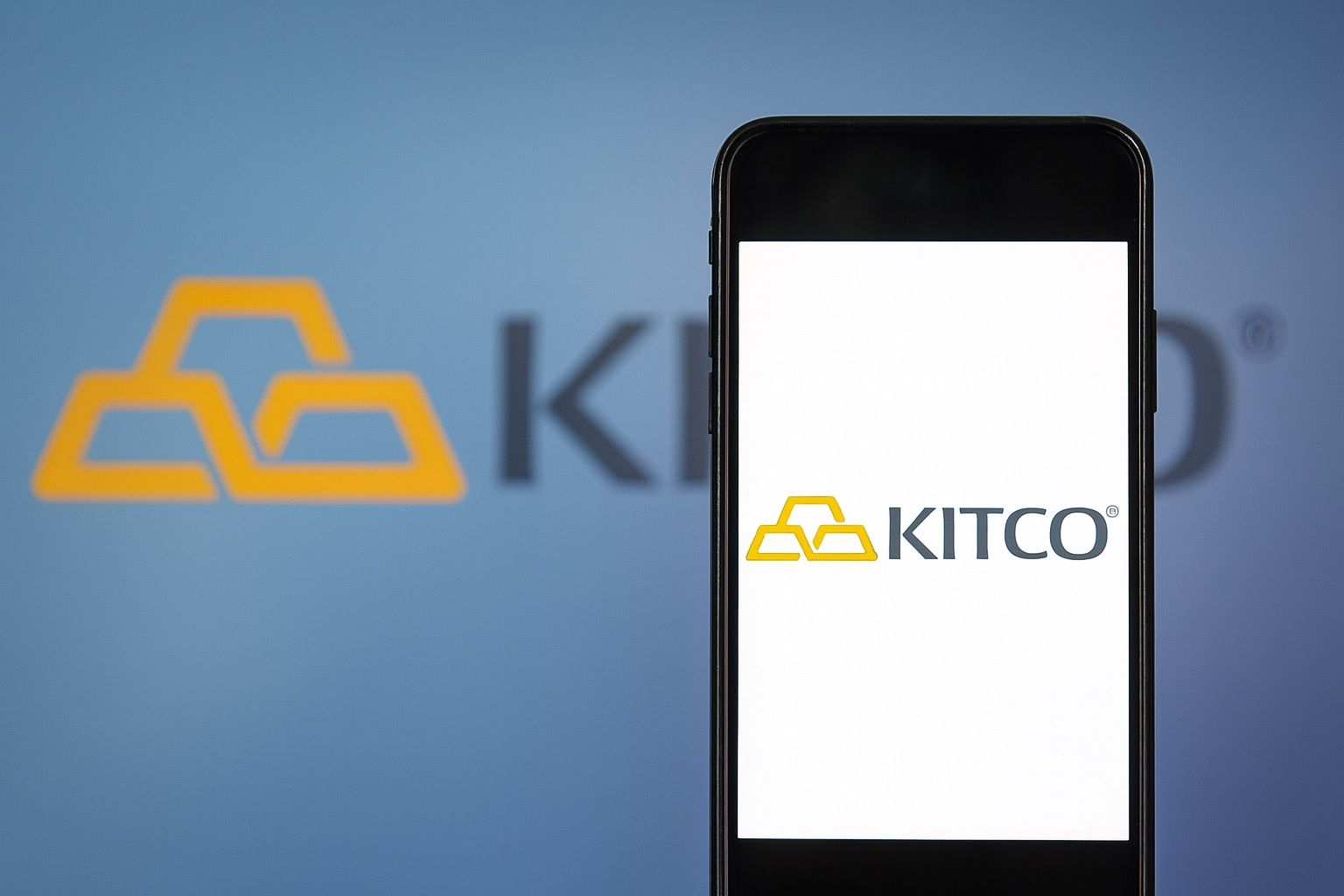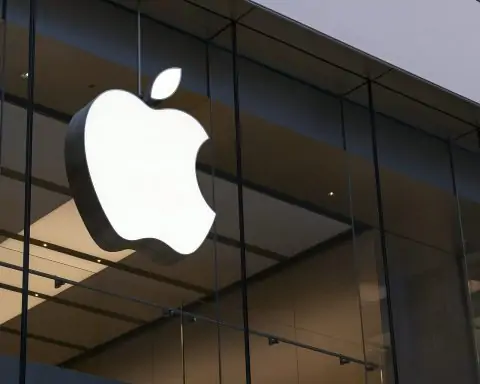- Gold’s New High: Gold prices surged above $4,000 per ounce for the first time in early October 2025, with spot gold touching an intraday peak around $4,059 on Oct. 8 [1] [2]. This marks an all-time high for gold, capping a ~50% year-to-date rally driven by safe-haven buying.
- Silver Nears Record: Silver spiked to about $50 per ounce, its highest level since 2011 and roughly on par with its historic 1980/2011 peaks [3] [4]. The “white metal” has gained 60–70% in 2025, dramatically outperforming gold’s rise [5] [6].
- Rally’s Drivers: Investors have flocked to precious metals amid economic and geopolitical jitters – from a potential U.S. government shutdown and global conflicts to expectations of Federal Reserve rate cuts [7] [8]. A weaker dollar and falling real yields boosted non-yielding assets like gold and silver, while central banks have been buying gold at a record pace [9] [10]. Silver also benefits from strong industrial demand (solar, electronics) and a supply deficit for a fifth straight year [11] [12].
- Profit-Taking Pullback: After the torrid rally, profit-taking set in. On Oct. 9, gold and silver prices were modestly weaker as short-term traders locked in gains [13]. Hitting the psychological $4,000 level in gold invited routine selling, and a resurgent U.S. dollar plus rising bond yields could trigger a 5–10% short-term pullback in gold, analysts say [14]. Early on Oct. 9, gold dipped about 0.7% to ~$4,015 in Asia trading on overbought technical signals [15].
- Easing Risks vs. Safe Haven: Signs of geopolitical de-escalation have briefly tamed the rally – for example, news of a ceasefire deal in the Israel-Hamas conflict trimmed some of gold’s safe-haven appeal [16] [17]. A senior analyst noted gold’s run “faces resistance” as Middle East tensions ease and the U.S. dollar recovers, making bullion pricier for overseas buyers [18] [19]. Still, bullish bias remains intact, he added, with the “path to new all-time highs still wide open” [20] [21].
- Bubble or More Upside? Experts are divided on what’s next. Some warn of a crash: one market expert cautions the gold/silver rally may “soon crash,” speculating prices could fall up to 50% from their highs in coming months [22]. Renowned investor Robert Kiyosaki likewise warned that “bubbles are about to start busting” – and that gold, silver (and Bitcoin) could see a sharp drop before offering a buying opportunity [23] [24].
- Bullish Outlook & Forecasts: On the other hand, many analysts argue the current upswing rests on solid fundamentals rather than pure speculation. “This is not a speculative rally – there are pretty solid fundamentals behind silver’s move,” notes veteran analyst Ross Norman, pointing to only modest increases in speculative positions [25] [26]. Some even contend this bull market is different from 1980 or 2011 – not a short-lived spike, but a sustainable upswing that could lead to permanently higher prices [27]. Major banks remain bullish: UBS now projects gold climbing to ~$4,200 in coming months, and Goldman Sachs forecasts $4,900 by 2026 [28]. Many expect silver to finally break its $50 ceiling; HSBC’s strategists say silver “stands on the cusp” of a new record and could trade in a volatile $45–$53 range into year-end [29].
Precious Metals Skyrocket to Historic Highs
Gold and silver have been on a record-breaking tear in 2025. Gold entered the year around $2,800 and by October blasted past the $4,000/oz milestone – an unprecedented level [30] [31]. On October 7–8, spot gold surged to an all-time high near $4,078 before settling around $4,038 by Oct. 9 [32] [33]. This ~53% year-to-date jump is gold’s steepest annual gain since 1979 [34], vastly outpacing equities (the S&P 500 is up ~15% YTD) [35]. “$4,000 an ounce seemed far-fetched at the start of the year… but after a ~50% rally, here we are,” noted one investment analyst, reflecting widespread amazement at gold’s ascent [36].
Silver’s performance has been even more astounding. The white metal started 2025 in the low $30s and by early October catapulted to roughly $48–50/oz, a level unseen in 14 years [37] [38]. On Oct. 9, silver touched the $50 mark for the first time, effectively hitting a nominal record high (surpassing its 2011 peak of ~$49.5) [39] [40]. Prices at this level represent a 60–65% gain in 2025 [41] [42]. The gold–silver ratio (ounces of silver per ounce of gold) tightened to ~82, its lowest in a year, as silver played “catch up” after lagging gold in prior years [43] [44].
What’s driving this historic rally? In a word: uncertainty. Investors worldwide have piled into precious metals as a refuge from a storm of economic and geopolitical risks. “Growing unease” over political dysfunction in Washington (including a near U.S. government shutdown), high global debt levels, and multiple conflicts (from the Middle East to Ukraine) has spurred a flight to safety into gold [45] [46]. Central banks are buying gold hand over fist – on pace for ~1,000 tons in 2025, the fourth straight year of massive accumulation [47]. Gold-backed ETFs have seen record inflows (over $26 billion in Q3 alone) as retail and institutional investors alike seek insurance against market turbulence [48].
Silver has ridden gold’s coattails but also has its own tailwinds. With gold’s record run attracting headlines, “ancillary buying in silver” kicked in, as investors view silver as the leveraged play on gold’s strength [49]. At the same time, silver’s unique dual role – a precious metal and an industrial commodity – means it’s benefiting from robust demand in electronics, solar panels and clean technology [50]. Supply, meanwhile, is constrained. 2025 is projected to be the fifth consecutive year of global silver supply deficits – demand for silver has exceeded mine output by ~800 million ounces over 2019–2024 [51]. Even this year, a ~187 Moz shortfall is expected [52]. Because much of silver production is a byproduct of mining other metals, supply can’t ramp up quickly in response to price spikes [53]. These solid fundamentals have provided a strong backbone to silver’s rally. “Net long positions are only modestly higher, so this isn’t just speculation… there are pretty solid fundamentals behind silver’s move,” observes Ross Norman [54].
After the Surge: Profit-Taking and Market Jitters
After such a meteoric rise, it’s no surprise that gold and silver took a breather. By Oct. 9, traders started to cash in profits, leading to modest price pullbacks. Gold, which had closed 1.4% higher on Oct. 8, dipped about 0.7% in early Asian trading the next day to around $4,015 [55]. Silver likewise edged lower off its highs (though it remained near the $50 threshold) [56]. Technical indicators suggested gold was entering overbought territory, prompting some short-term players to lighten up positions after a “scorching” four-day run-up [57].
Market sentiment also shifted with fast-moving news on the geopolitical front. Gold’s safe-haven appeal “waned” somewhat as hints of peace emerged in the Middle East: U.S. President Donald Trump claimed a Gaza peace deal was “very close”, after Israel and Hamas signaled progress in talks [58]. On Oct. 9, an announced ceasefire and hostage deal between Israel and Hamas reduced immediate war fears [59]. This eased some “risk-off” flows into gold, at least temporarily [60]. Simultaneously, the U.S. dollar began to rebound, hovering near a two-month high by Oct. 9 [61]. Since gold is priced in dollars, a stronger dollar makes it pricier for non-U.S. buyers, which can dampen demand.
Analysts had been cautioning that $4,000 would be a key inflection point for gold. Psychologically, crossing $4k could trigger a wave of profit-taking, and indeed that level has proven to be short-term resistance. “Some profit-taking at the $4,000 level is likely,” one analysis noted, adding that if the U.S. dollar strengthens or real yields rise, it could spur a 5–10% pullback in gold prices [62]. In other words, a healthy correction of perhaps a few hundred dollars is on the table if economic data or Fed signals send bond yields upward (since higher real interest rates increase the opportunity cost of holding gold).
Despite the slight cooling, it’s worth noting that as of Oct. 9, gold was still trading around $4,030–4,050/oz [63] – holding the bulk of its gains – and silver around $50. “However, the bullish bias remains intact… the path to new all-time highs is still wide open,” asserts Nikos Tzabouras, a senior market analyst, even as he acknowledges near-term vulnerabilities [64] [65]. In short, the pullback so far has been modest, and many see it as a natural pause rather than an end to the uptrend.
Is a Crash Coming or Is This Time Different?
With gold and silver at exalted heights, debate is intensifying: Are we in a bubble about to burst, or do these metals still have room to run? On one side are the doomsayers – experts who believe the current rally is overheated and ripe for a steep fall.
High-profile investor Robert Kiyosaki (author of Rich Dad Poor Dad) recently warned that “bubbles are about to start busting.” He argues that many asset markets are in a euphoric phase and if a broad market selloff hits, “when bubbles bust, odds are gold, silver, and Bitcoin will bust too.” Kiyosaki actually welcomes a correction – he says it would be “good news” as an opportunity to buy more at lower prices [66] [67]. His strategy: be ready to “buy the dip” in hard assets if and when a crash comes [68]. Similarly, at least one market expert quoted in Indian media has issued a stark prediction that the gold and silver rally may “soon crash, with prices possibly falling up to 50% in the coming months.” [69] Such an extreme scenario would imply gold perhaps back to ~$2,000 and silver to ~$25 – essentially giving back all of 2025’s gains. These bearish commentators often point to historical precedents: the last two times silver neared $50 – in Jan 1980 and April 2011 – spectacular booms were followed by brutal busts [70]. In 1980, silver’s spike (fueled by the infamous Hunt brothers cornering attempt) collapsed almost overnight; in 2011, silver plunged by 30% within days of its peak. This history haunts today’s rally and gives weight to more cautious forecasts. As one long-time trader reminded, “silver can be wildly volatile, prone to boom-and-bust cycles more than gold.” A break above $50 could unleash turbulence again now, some warn [71]. For these reasons, the skeptics urge caution, suspecting that current prices may have overshot sustainable values in the short run.
On the other side are the bulls who maintain that this time is different – or at least that the rally has farther to go before it’s over. They argue that unlike past spikes driven largely by speculation, today’s gold/silver surge is underpinned by strong fundamentals and structural shifts. Analyst Jesse Colombo, for instance, contends that silver is in a “sustainable, long-term bull market” now, unlike the short-lived manias of 1980 and 2011 that ultimately “shattered investors’ hopes.” [72] In his view, the confluence of factors (chronic supply deficits, enduring investor demand, and a macro environment of low real yields and high debt) could support permanently higher price levels for silver and gold, rather than a quick reversion to old ranges.
Many mainstream financial institutions also remain optimistic that precious metals have more upside. UBS analysts, for example, just raised their forecasts – they now target ~$4,200/oz for gold in the coming months [73]. Goldman Sachs likewise predicts gold could reach $4,900 by 2026 [74], citing longer-term drivers like central bank buying and currency debasement risks. On the silver front, HSBC’s metals strategy team noted silver “stands on the cusp” of its old record and said it “likely will surpass $50/oz in the near term,” though with high volatility [75]. In fact, HSBC envisions a choppy $45–$53 trading range through year-end [76] – implying silver staying elevated. Some more bullish pundits suggest if silver breaks decisively into new record territory above $50, it could even “open the floodgates” to a melt-up toward $75 or $100 over time in a squeeze scenario [77] [78]. While that may be an outlier view, it underscores the positive sentiment among silver enthusiasts.
Even those bullish on gold and silver do issue caveats. Volatility is a given – sharp swings (±10–15% or more) can occur even in a rising market [79]. And if the world’s problems that drove safe-haven demand (war, inflation, political strife) start to resolve, gold’s appeal could fade. “Don’t go all-in,” they caution, reminding that an allocation to gold is a hedge, not a get-rich-quick trade [80]. Billionaire investor Ray Dalio, for instance, recommends holding a diversified 10–15% of one’s portfolio in gold as a long-term hedge [81] – a vote of confidence in gold’s importance, but also a tacit warning not to concentrate too heavily in any single asset.
Outlook: Volatile but Supportive Conditions
Heading into late 2025, the consensus is that the precious metals market could see further volatility, but the overarching backdrop remains supportive. Key factors to watch include:
- Geopolitical Developments: Any flare-up of risk (e.g. an escalated conflict or financial crisis) could swiftly rekindle haven buying. Conversely, major peace deals or easing of global tensions (like a durable Gaza peace or resolution in Ukraine) may remove some of gold’s risk premium. As of now, numerous geopolitical and economic uncertainties persist – a reason gold is still up 50% YTD despite stocks also being at highs [82].
- Central Bank & Investor Demand: Central banks show no sign of stopping their gold purchases, providing a steady floor of demand [83]. ETF inflows and retail buying have been robust, though they may cool if prices get too high. So far, 2025’s demand appears broad-based (from small investors to large institutions), which is encouraging for bulls [84] [85]. If there’s a correction, bargain hunters – including possibly central banks like China or Russia – may step in, cushioning any fall.
- Interest Rates and Dollar: The trajectory of U.S. interest rates and the dollar will be crucial. The Fed’s next moves are in focus – markets are pricing in rate cuts of 0.25% in October and December 2025 [86]. If the Fed indeed eases policy due to a slowing economy or job market risks (as hinted in recent Fed minutes) [87], that would be bullish for gold (lower rates reduce gold’s opportunity cost and can weaken the dollar). However, if inflation remains sticky and the Fed delays cuts or even hikes again, that could strengthen the dollar and pressure precious metals. As one analyst noted, “If risk sentiment continues to improve, this may drag gold prices lower in the near term as investors rush back toward riskier assets.” [88] In other words, a resilient economy or rebounding stock market could siphon some funds away from gold.
- Technical Levels: On the charts, $4,000 for gold and $50 for silver are key psychological and technical levels. A firm break above those could trigger another leg higher as momentum traders pile in. Indeed, some strategists think a decisive breach – especially for silver – could lead to an explosive move due to the lack of historical resistance above (silver has never traded sustainably above $50) [89]. On the downside, traders will watch support levels; a fall back below ~$3,800 in gold (previous resistance) might signal a deeper correction is underway.
Bottom line: Gold and silver’s rally has been extraordinary, reflecting both fear and optimism – fear of economic troubles driving safe-haven demand, and optimism that these metals will retain value amid uncertainty. While a short-term correction would not be surprising – and indeed may be healthy after such a run-up – the broader forces that propelled gold to $4k and silver to $50 (weak real yields, geopolitical strife, robust demand outstripping supply) are still in play. Many analysts therefore expect any pullbacks to be relatively contained, with the overall uptrend potentially resuming. As UBS put it, the bullish bias is intact and new highs may yet lie ahead [90] [91].
Investors should brace for choppy trading in the coming weeks. A mix of profit-taking, news-driven swings, and speculative fervor could make for wild price gyrations. But for now, gold and silver remain among 2025’s best-performing assets, and their story is “only the beginning”, according to some experts [92]. Whether the climax is yet to come – or already passed – will hinge on how the next chapters of economic and political uncertainty unfold. In the meantime, the allure of precious metals as a store of value appears as strong as it’s been in decades, keeping both the hopes of bulls and the caution of skeptics alive and well.
Sources: Gold and silver price news – Kitco News [93]; Reuters [94] [95] [96]; Mining.com/Bloomberg [97] [98]; Jerusalem Post (J. Colombo op-ed) [99]; TS2 Tech (TechSpace) [100] [101]; News18/India feeds [102] [103]; Business Today [104] [105].
References
1. ts2.tech, 2. www.reuters.com, 3. www.reuters.com, 4. www.reuters.com, 5. ts2.tech, 6. www.reuters.com, 7. ts2.tech, 8. www.reuters.com, 9. ts2.tech, 10. www.reuters.com, 11. ts2.tech, 12. ts2.tech, 13. www.mining.com, 14. www.rashtranews.com, 15. www.mining.com, 16. www.mining.com, 17. www.reuters.com, 18. www.reuters.com, 19. www.reuters.com, 20. www.reuters.com, 21. www.reuters.com, 22. www.rashtranews.com, 23. www.businesstoday.in, 24. www.businesstoday.in, 25. www.reuters.com, 26. www.reuters.com, 27. www.jpost.com, 28. ts2.tech, 29. ts2.tech, 30. ts2.tech, 31. ts2.tech, 32. ts2.tech, 33. www.reuters.com, 34. www.reuters.com, 35. ts2.tech, 36. ts2.tech, 37. ts2.tech, 38. ts2.tech, 39. www.reuters.com, 40. www.reuters.com, 41. ts2.tech, 42. www.reuters.com, 43. ts2.tech, 44. ts2.tech, 45. ts2.tech, 46. ts2.tech, 47. ts2.tech, 48. ts2.tech, 49. ts2.tech, 50. ts2.tech, 51. ts2.tech, 52. ts2.tech, 53. ts2.tech, 54. www.reuters.com, 55. www.mining.com, 56. www.mining.com, 57. www.mining.com, 58. www.mining.com, 59. www.reuters.com, 60. www.reuters.com, 61. www.reuters.com, 62. www.rashtranews.com, 63. www.reuters.com, 64. www.reuters.com, 65. www.reuters.com, 66. www.businesstoday.in, 67. www.businesstoday.in, 68. www.businesstoday.in, 69. www.rashtranews.com, 70. ts2.tech, 71. ts2.tech, 72. www.jpost.com, 73. ts2.tech, 74. ts2.tech, 75. ts2.tech, 76. ts2.tech, 77. ts2.tech, 78. ts2.tech, 79. ts2.tech, 80. ts2.tech, 81. ts2.tech, 82. ts2.tech, 83. ts2.tech, 84. ts2.tech, 85. ts2.tech, 86. www.reuters.com, 87. www.reuters.com, 88. www.reuters.com, 89. ts2.tech, 90. www.reuters.com, 91. www.reuters.com, 92. www.jpost.com, 93. www.kitco.com, 94. www.reuters.com, 95. www.reuters.com, 96. www.reuters.com, 97. www.mining.com, 98. www.mining.com, 99. www.jpost.com, 100. ts2.tech, 101. ts2.tech, 102. www.rashtranews.com, 103. www.rashtranews.com, 104. www.businesstoday.in, 105. www.businesstoday.in









